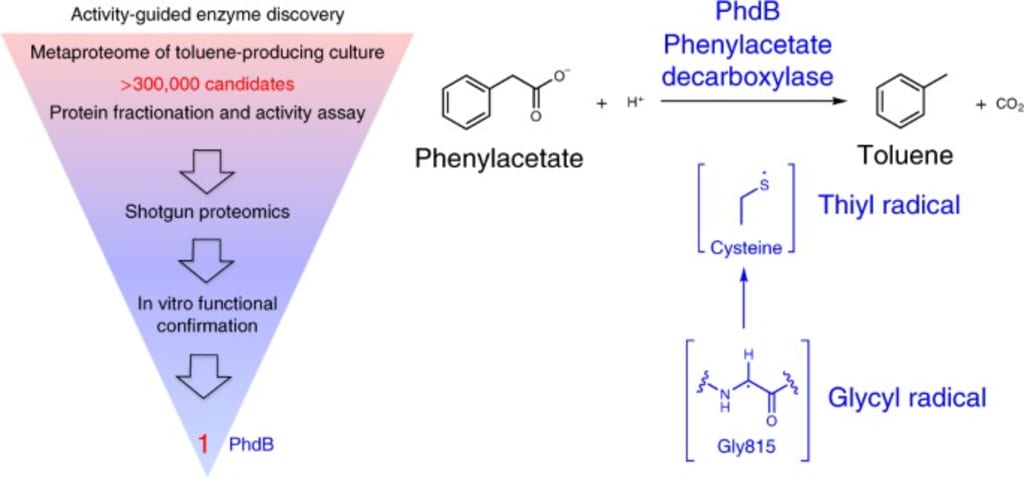AI Tool Revolutionizes Base Editing Capabilities for Enzyme Discovery
Although AI can be an effective assistant in enzyme research, it is not a replacement for traditional experimentation.

The utilization of AI technology to assist in predicting and aligning the structure of proteins has paved the way for a ground-breaking method of classifying and mining their functionalities. This remarkable advancement has opened avenues for discovering a diverse range of cytidine deaminases- single and double-strand that possess immense potential as custom-made base editors. These extraordinary enzymes hold promise for revolutionizing therapeutic interventions and enhancing agricultural breeding practices.
Under the leadership of Caixia Gao, PhD at the Institute of Genetics and Developmental Biology of the Chinese Academy of Sciences, a study was conducted that incorporated an AI-based approach for the discovery of novel deaminase proteins used in base editing through structural prediction and classification. This method used solely the cytidine deaminase superfamily, and researchers emphasize that this approach creates a plethora of new technologies and functions that further increase the use of base editors for agricultural and medicinal purposes, unlocking new prospects in discovering and developing preferred plant genetic traits.
The current strategies of protein mining, based solely on amino acid sequences, lack a reliable connection between protein structure and functionality. With the advent of base editing, agricultural breeding has gained a whole new outlook with the capability to generate desirable qualities in the elite germplasm. With the discoveries of several deaminases, the limitations in editing of distinct DNA sequences and different species can now be surpassed.
By predicting the structures of proteins in the deaminase family using AlphaFold2, the researchers successfully classified and analyzed deaminases based on their structural characteristics, leading to identification of five new deaminases with cytidine deamination activity for use in DNA base editing. Moreover, this study also led to the reclassification of the group of cytidine deaminases, SCP1.201, which was initially thought to be active on dsDNA, but was later found to be most effective on ssDNA. Following the application of protein profiling and engineering techniques, a range of new DNA base editors with improved features, such as higher efficiency, reduced generation of off-target edits, preferred sequence motif editing, and compact size, were developed.
The scientists underlined the potential of constructing a wide range of base editors to facilitate the formation of precise therapies or agronomical propagation projects. They managed to design the most diminutive single-strand selective cytidine deaminase, which is capable of containing the first proficient cytosine base editor inside a solitary adeno-associated virus.
In addition, they established a notably potent deaminase from this family, particularly for soybean plants, an essential agricultural yield with limited efficiency from prior cytosine base editors.
Advances in protein structure prediction from large genomic databases have the potential to speed up the growth of bioengineering tools. Furthermore, this research could be highly beneficial to scientists and engineers who work in the areas of phylogenetics, metagenomics, protein engineering and evolution, genome editing, and plant breeding.
How research and education centers can take the help of AI in studying existing enzymes and discovering new ones?
Utilizing the immense potential of AI, research and education canters can significantly expedite their investigations of existing and newly-discovered enzymes. This innovative technology has the potential to boost accuracy while gathering priceless insights from large quantities of data. Among the applications of AI in this field, some examples include
• Enzyme Data Analysis: Through Artificial Intelligence, scientists can benefit from the swift and thorough analysis of immense enzyme datasets. These include structural characteristics, activities, and mutual relationships between different enzymes. Additionally, machine learning tools enable researchers to discover and analyze patterns that might not be noticed at first glance.
• Predicting Enzyme Function: Using already established data on enzyme functionality, Artificial Intelligence algorithms can be leveraged to forecast the functions of newly discovered enzymes based on their molecular structure and arrangement. It permits scientists to pinpoint which enzymes require closer inspection and examination.
• Metagenomics and Enzyme Discovery: Artificial Intelligence can leverage metagenomic data to uncover new enzymes in ecological samples. It can use genetic information to forecast enzyme action, which can be of great benefit when looking into assorted and unclassified microbial populations.
• Enzyme Design: By using AI-driven algorithms, scientists can design brand-new enzymes, or even adjust existing ones to perform specific tasks. These newly-designed enzymes could be applied to a wide variety of applications, including both industrial production and medical treatments.
• Protein Folding Prediction: Artificial Intelligence can provide an accurate estimation of the 3D configuration of enzymes and other proteins, an integral part of deciphering their purpose and developing new drugs. Through machine learning, laboratory experiments can be more effectively organized and managed lowering the need for numerous tests and bettering the success of the enzyme synthesis and analysis.
• Robotics and Automation: Robotics and automation are driven by AI, enabling scientists to avoid repetitive duties such as high-throughput screening or crystallography and devote their energy to more challenging elements of their research
• Collaboration and Knowledge Sharing: AI can bolster collaboration amongst researchers, recommending potential colleagues and introducing new research which may spark new revelations and innovations.
Final Thoughts
The trustworthiness and precision of the outcomes necessitate combining AI-driven information with experimental proof. Moreover, the application of AI in scientific investigation must address moral concerns, including data privacy, objectivity, and partiality.
About the Creator
I3TK
International Institute of Innovation and Technology (I3TK) is based in New Town, Kolkata in the State of West Bengal, India. For more details, visit: https://i3tk.org/
Enjoyed the story? Support the Creator.
Subscribe for free to receive all their stories in your feed. You could also pledge your support or give them a one-off tip, letting them know you appreciate their work.






Comments
There are no comments for this story
Be the first to respond and start the conversation.